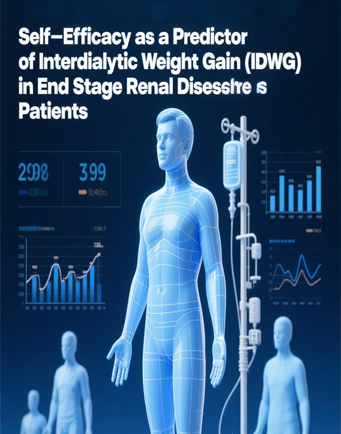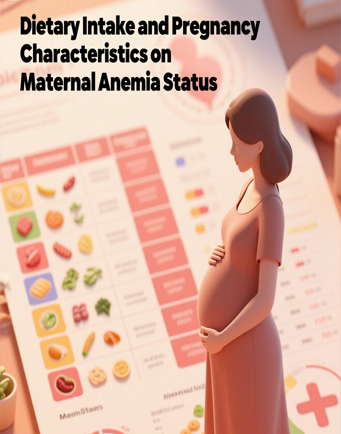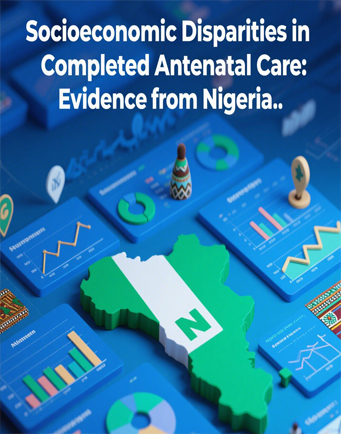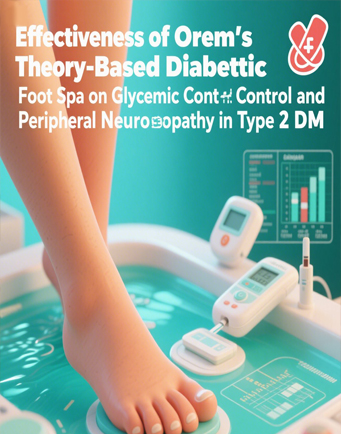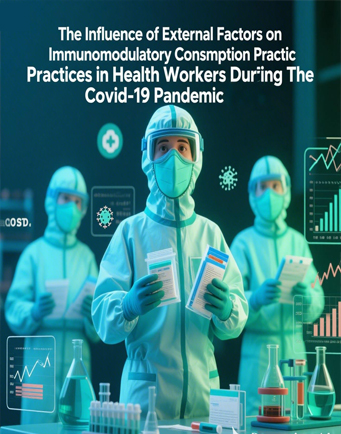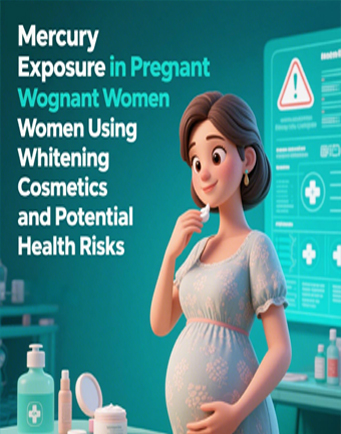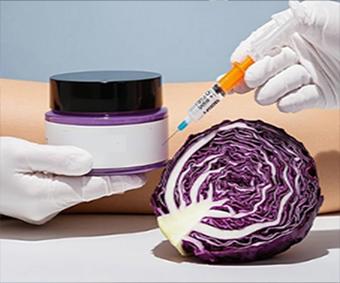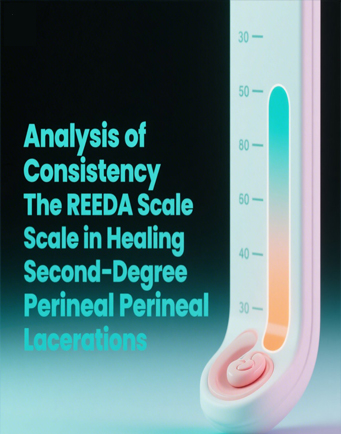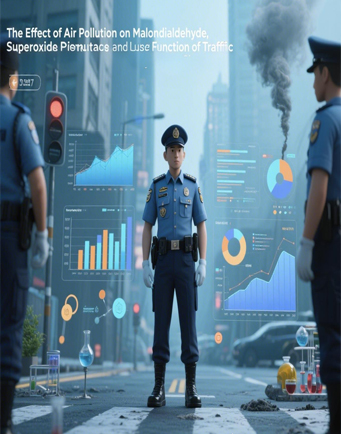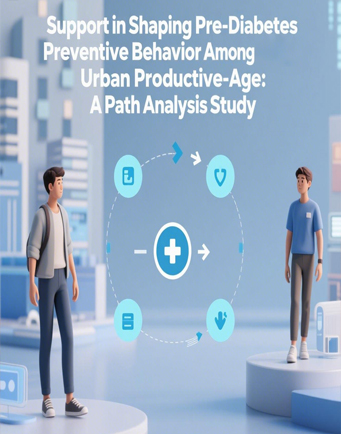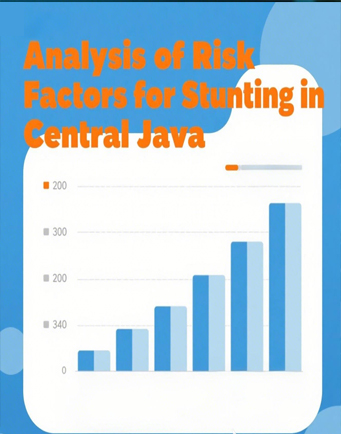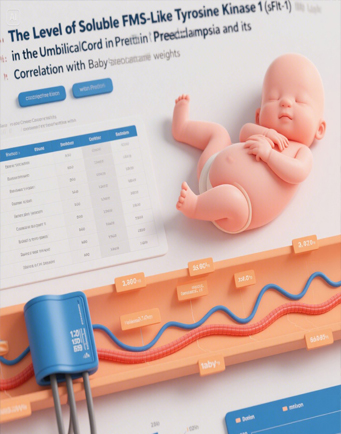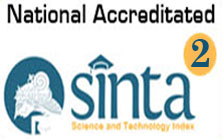The Density of Aedes aegypti Larvae Density and the Incidence of Dengue Hemorrhagic Fever in the Pesingahan Environment, Pagesangan Barat Village, Mataram
Downloads
Dengue hemorrhagic fever remains a public health concern in West Nusa Tenggara Province, with the majority of cases occurring in Mataram City and the Pesinggahan Environment of West Pagesangan Village. The density of Aedes aegypti larvae as disease vectors has a strong influence on the high incidence of cases and the spread of dengue hemorrhagic fever. The objective of this study was to identify if there was a relation between the density of Aedes aegypti larvae and the rate of dengue hemorrhagic fever in the Pesinggahan Environment of Pagesangan Barat Village. This study is an analytic observational study with a cross-sectional design. This study's sample size was 56 houses. The data collected included information on the density of Aedes aegypti larvae and the incidence rate of dengue hemorrhagic fever in the Pesinggahan Environment of Pagesangan Barat Village over the previous year. Descriptive analysis was used to examine data on the density of Aedes aegypti larvae and the incidence rate of dengue hemorrhagic fever in the Pesinggahan environment. The findings revealed that the density of Aedes aegypti larvae was high (Density Figure (DF) = 6), as was the incidence rate of dengue hemorrhagic fever (0.39%). The statistical analysis between the density of A. aegypti larvae and the incidence rate of dengue hemorrhagic fever in the Pesinggahan Environment with the chi square test demonstrated indicate that p-value = 0.000 < alpha = 0.05. Based on the results of the study, there was a relationship between the density of A. aegypti larvae and the incidence rate of dengue hemorrhagic fever in Pesinggahan, Pagesangan Barat Village. Further research is required regarding the detection of the dengue virus transmitted by A. aegypti mosquitoes to their offspring (transovarial).
Afira, F., & Mansyur, M. (2013). Gambaran Kejadian Demam Berdarah Dengue di Kecamatan Gambir dan Kecamatan Sawah Besar, Jakarta Pusat, Tahun 2005-2009. eJournal Kedokteran Indonesia, 1(!), 23-29. https://doi.org/10.23886/ejki.1.1592.23-29
Cahyani, I. P. (2019). Hubungan Kepadatan Jentik Aedes sp. Dengan Kejadian Demam Berdarah Dengue (DBD) Di Kecamatan Magetan, Kabupaten Magetan Tahun 2019. Diploma thesis. Poltekkes Kemenkes Surabaya.
Candra, A. (2010). Demam Berdarah Dengue: Epidemiologi, Patogenesis, dan Faktor Risiko Penularan. ASPIRATOR - Journal of Vector-Borne Disease Studies, 2(2), 110-119. Retrieved from http://ejournal2.litbang.kemkes.go.id/index.php/aspirator/article/view/1787
Data Puskesmas Pagesangan. (2016). Survei Larva Aedes di Lingkungan Pesinggahan. Mataram: Puskesmas Pagesangan.
Dinas Kesehatan Kota Mataram. (2015). Profil Kesehatan Kota Mataram Tahun 2015. Mataram: Dinas Kesehatan Kota Mataram.
Dinas Kesehatan Kota Mataram. (2016). Profil Kesehatan Kota Mataram Tahun 2016. Mataram: Dinas Kesehatan Kota Mataram.
Dinas Kesehatan NTB. (2015). Profil Kesehatan NTB Tahun 2015. Mataram: Dinas Kesehatan NTB.
Dinas Kesehatan NTB. (2016). Profil Kesehatan NTB Tahun 2016. Mataram: Dinas Kesehatan NTB.
Frida, N. (2008). Mengenal Demam Berdarah Dengue (Edisi I). Jakarta Barat: CV. Pamularsih.
Kelurahan Pagesangan Barat. (2016). Profil Kelurahan Pagesangan Barat. Tahun 2016. Mataram: Kelurahan Pagesangan Barat.
Komaling, D., Sumampouw, O. J., & Sondakh, R. C. (2020). Determinan Kejadian Demam Berdarah Dengue di Kabupaten Minahasa Selatan Tahun 2016-2018. Indonesian Journal of Public Health and Community Medicine, 1(1), 57-64.
Kurniawati, R., Wati, D.M., Ariyanto, Y. (2015). Analisis Spasial Sebaran Kasus Demam Berdarah Dengue (DBD) di Kabupaten Jember Tahun 2014. Artikel Ilmiah Hasil Penelitian Mahasiswa, 1-7. Retrieved from https://repository.unej.ac.id/bitstream/handle/123456789/75300/Rika%20Kurniawati.pdf?sequence=1&isAllowed=y
Kusriastuti, R., & Sutomo, S. (2005). Evolution of dengue Prevention and control programme in Indonesia. Dengue Bulletin, 29, 1-7
Leri, C. Y. A. P., Setyobudi, A., & Ndoen, E. M. (2021). Density figure of Aedes aegypti larvae and community participation in prevention of dengue hemorrhagic fever (DHF). Lontar: Journal of Community Health, 3(3), 123-132. https://doi.org/10.35508/ljch.v3i3.4329
Masruroh, L., Wahyuningsih, N. E., & Dina, R. A. (2016). Hubungan faktor lingkungan dan praktik pemberantasan sarang nyamuk (PSN) dengan kejadian demam berdarah dengue (DBD) di Kecamatan Ngawi. Jurnal Kesehatan Masyarakat (Undip), 4(4), 992-1001.
Purnama, S. G., & Baskoro, T. (2012). Maya index dan kepadatan larva Aedes aegypti terhadap infeksi dengue. Makara Kesehatan, 16(2), 57-64.
Sambel, D. T. (2009). Entomologi Kedokteran. Yogyakarta: Andi.
Sanchez, L., Vanlerberghe, V., Alfonso, L., Marquetti, M.delC., Guzman, M. G., Bisset, J., & van der Stuyft, P. (2006). Aedes aegypti larval indices and risk for dengue epidemics. Emerging infectious diseases, 12(5), 800–806. https://doi.org/10.3201/eid1205.050866 .
Santhi, N. M. M., WD, I. G., & Aryasih, I. G. A. M. (2014). Pengaruh Pengetahuan dan Sikap Masyarakat Tentang DBD Terhadap Aktivitas Pemberantasan Sarang Nyamuk di Desa Dalung Kecamatan Kuta Utara Tahun 2012. Jurnal Kesehatan Lingkungan, 4(2), 152-155.
Sari, C. I. N. (2005). Pengaruh LingkunganTerhadap Perkembangan Penyakit Malaria dan Demam Berdarah Dengue. Doktoral dissertation. Institute Pertanian Bogor. Retrieved from https://rudyct.com/PPS702-ipb/09145/cut_irsanya_ns.pdf
Sazali, M., & Astuti, R. R. U. N. W. (2018). Pengendalian Vektor Demam Berdarah Menggunakan Lethal MosquitoTrap Modification (LMM) Di Kelurahan Pagutan Induk, Kota Mataram. JBIO: jurnal biosains (the journal of biosciences), 4(3), 124-130. Retrieved from https://jurnal.unimed.ac.id/2012/index.php/biosains/article/view/11320
Sucipto, P. T., Raharjo, M., & Nurjazuli, N. (2016). Faktor – Faktor Yang Mempengaruhi Kejadian Penyakit Demam Berdarah Dengue (DBD) Dan Jenis Serotipe Virus Dengue Di Kabupaten Semarang. Jurnal Kesehatan Lingkungan Indonesia, 14(2), 51-56. https://doi.org/10.14710/jkli.14.2.51-56
Sudarmaja, I. M., Swastika, I. K., Diarthini, L. P. E., Prasetya, I. P. D., & Wirawan, I. M. A. (2022). Dengue virus transovarial transmission detection in Aedes aegypti from dengue hemorrhagic fever patients' residences in Denpasar, Bali. Veterinary world, 15(4), 1149–1153. https://doi.org/10.14202/vetworld.2022.1149-1153
Sunaryo, S., & Pramestuti, N. (2014). Surveilans Aedes aegypti di daerah endemis demam berdarah dengue. Kesmas: Jurnal Kesehatan Masyarakat Nasional (National Public Health Journal), 8(8), 423-429. http://dx.doi.org/10.21109/kesmas.v8i8.415
World Health Organization. (2002). Panduan Lengkap Pencegahan dan Pengendalian Dengue dan Demam Berdarah. Jakarta. Penerbit EGC.
World Health Organization. (2016). Dengue and Severe Dengue. World Health Organization. Retrieved from http://www.who.int/mediacentre/factsheets/fs117/en/
Widiyanto, T. (2007). Kajian manajemen lingkungan terhadap kejadian demam berdarah dengue (DBD) di kota purwokerto jawa tengah. Thesis. Universitas Diponegoro Semarang.
Widoyono, M. P. H. (2011). Penyakit Tropis Epidemiologi, Penularan, Pencegahan & Pemberantasan. Jakarta: Penerbit Erlangga Indonesia.
Wirayoga, M. (2014). Hubungan Kejadian Demam Berdarah Dengue Dengan Iklim Di Kota Semarang Tahun 2006-2011. Unnes Journal of Public Health, 2(4), 1-9. https://doi.org/10.15294/ujph.v2i4.3055
Yudhastuti, R., & Vidiyani, A. (2005). Hubungan kondisi lingkungan, kontainer, dan perilaku masyarakat dengan keberadaan jentik nyamuk Aedes aegypti di daerah endemis demam berdarah dengue Surabaya. Jurnal Kesehatan Lingkungan, 1(2), 170-182.
Zuhriyah, L., Habibie, I., & Baskoro, A. (2012). The key container of Aedes aegypti in rural and urban Malang, East Java, Indonesia. Health and The Environment Journal (HEJ): Mission Statement, 3(3), 51-58.
Copyright (c) 2023 JURNAL INFO KESEHATAN

This work is licensed under a Creative Commons Attribution-NonCommercial-ShareAlike 4.0 International License.
Copyright notice
Ownership of copyright
The copyright in this website and the material on this website (including without limitation the text, computer code, artwork, photographs, images, music, audio material, video material and audio-visual material on this website) is owned by JURNAL INFO KESEHATAN and its licensors.
Copyright license
JURNAL INFO KESEHATAN grants to you a worldwide non-exclusive royalty-free revocable license to:
- view this website and the material on this website on a computer or mobile device via a web browser;
- copy and store this website and the material on this website in your web browser cache memory; and
- print pages from this website for your use.
- All articles published by JURNAL INFO KESEHATAN are licensed under the Creative Commons Attribution 4.0 International License. This permits anyone to copy, redistribute, remix, transmit and adapt the work provided the original work and source is appropriately cited.
JURNAL INFO KESEHATAN does not grant you any other rights in relation to this website or the material on this website. In other words, all other rights are reserved.
For the avoidance of doubt, you must not adapt, edit, change, transform, publish, republish, distribute, redistribute, broadcast, rebroadcast or show or play in public this website or the material on this website (in any form or media) without appropriately and conspicuously citing the original work and source or JURNAL INFO KESEHATAN prior written permission.
Permissions
You may request permission to use the copyright materials on this website by writing to jurnalinfokesehatan@gmail.com.
Enforcement of copyright
JURNAL INFO KESEHATAN takes the protection of its copyright very seriously.
If JURNAL INFO KESEHATAN discovers that you have used its copyright materials in contravention of the license above, JURNAL INFO KESEHATAN may bring legal proceedings against you seeking monetary damages and an injunction to stop you using those materials. You could also be ordered to pay legal costs.
If you become aware of any use of JURNAL INFO KESEHATAN copyright materials that contravenes or may contravene the license above, please report this by email to jurnalinfokesehatan@gmail.com
Infringing material
If you become aware of any material on the website that you believe infringes your or any other person's copyright, please report this by email to jurnalinfokesehatan@gmail.com.


